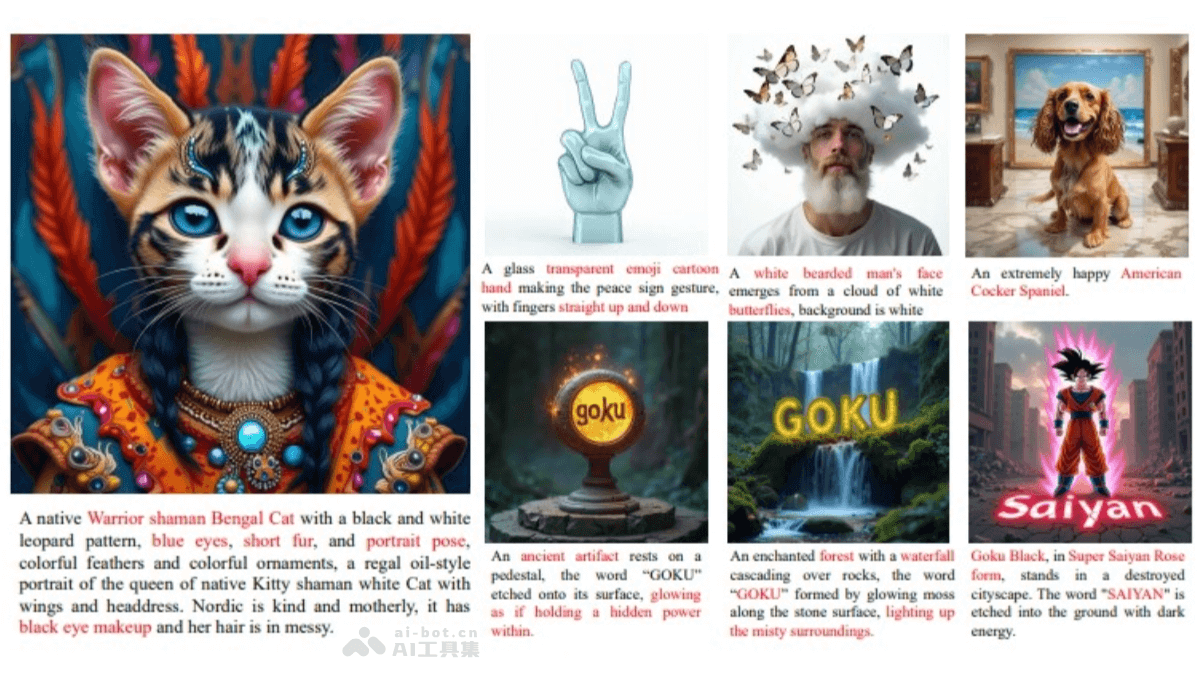Goku
by University of Hong Kong, ByteDanceGoku is a state-of-the-art video generation model designed for joint image and video generation, supporting text-to-video, image-to-video, and text-to-image modes.
What is Goku?
Goku is a state-of-the-art video generation model jointly developed by the University of Hong Kong and ByteDance. It is designed for joint image and video generation, supporting multiple modes including text-to-video, image-to-video, and text-to-image. Built on a rectified flow Transformer framework, Goku excels in generating high-quality, coherent outputs while significantly reducing production costs, especially in advertising.
Key Features
- Text-to-Image: Generates detailed images from text descriptions.
- Text-to-Video: Creates smooth, high-quality videos based on text inputs.
- Image-to-Video: Transforms static images into dynamic videos, maintaining visual consistency.
- Advertising Video Generation (Goku+): Reduces advertising video production costs by 100 times, with stable movements and rich expressions.
- Virtual Digital Human Video Generation: Produces realistic videos of virtual characters, ideal for virtual hosts and customer service.
- Multimodal Generation: Handles complex spatiotemporal dependencies within images and videos through shared latent space and full attention mechanisms.
Technical Principles
- Image-Video Joint VAE: Compresses image and video inputs into a shared latent space for unified processing.
- Transformer Architecture: Includes 2B and 8B parameter models for handling complex dependencies.
- Rectified Flow Formula: Trains via linear interpolation, offering faster convergence than traditional diffusion models.
- Large-scale Dataset: Built on 36 million videos and 160 million images, ensuring high-quality outputs.
- Efficient Training Infrastructure: Utilizes parallel strategies, fault-tolerant mechanisms, and ByteCheckpoint technology for stability and efficiency.
Use Cases
- Advertising: Generate high-quality, low-cost advertising videos.
- Content Creation: Create animations, natural landscapes, and other video content.
- Education: Develop educational videos and training courses.
- Entertainment: Produce video content for movies, TV shows, and animation.
Getting Started
- Project Website: https://saiyan-world.github.io/goku/
- GitHub Repository: https://github.com/Saiyan-World/goku
- HuggingFace Model Library: https://huggingface.co/datasets/saiyan-world/Goku-MovieGenBench
- arXiv Technical Paper: https://arxiv.org/pdf/2502.04896
Model Capabilities
Model Type
multimodal
Supported Tasks
Text-To-Video
Image-To-Video
Text-To-Image
Advertising Video Generation
Virtual Digital Human Video Generation
Tags
Video Generation
Image Generation
Multimodal AI
Advertising
Content Creation
AI Model
ByteDance
HKU
Transformer
Rectified Flow
Usage & Integration
License
Open Source
Screenshots & Images
Primary Screenshot

Additional Images
Stats
97
Views
0
Favorites

